Related Research Articles
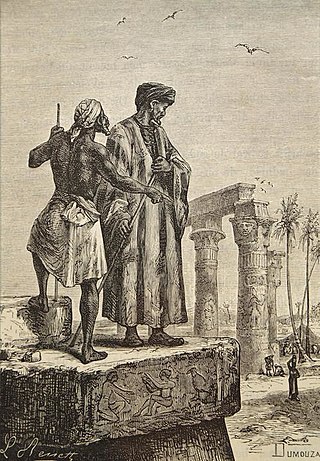
Abū Abd Allāh Muḥammad ibn Abd Allāh Al-Lawātī, commonly known as Ibn Battuta, was a Maghrebi traveller, explorer and scholar. Over a period of thirty years from 1325 to 1354, Ibn Battuta visited most of North Africa, the Middle East, East Africa, Central Asia, South Asia, Southeast Asia, China, the Iberian Peninsula, and West Africa. Near the end of his life, he dictated an account of his journeys, titled A Gift to Those Who Contemplate the Wonders of Cities and the Marvels of Travelling, but commonly known as The Rihla.
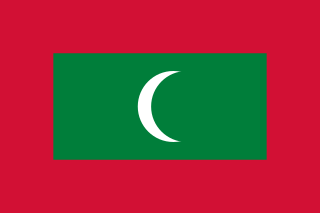
The Maldives, officially the Republic of Maldives, and historically known as the Maldive Islands, is a country and archipelagic state in South Asia in the Indian Ocean. The Maldives is southwest of Sri Lanka and India, about 750 kilometres from the Asian continent's mainland. The Maldives' chain of 26 atolls stretches across the equator from Ihavandhippolhu Atoll in the north to Addu Atoll in the south.

The history of the Maldives is intertwined with the history of the broader Indian subcontinent and the surrounding regions, comprising the areas of South Asia and Indian Ocean. The modern nation consists of 26 natural atolls, comprising 1194 islands. Historically, the Maldives has held a strategic importance due to its location on the major marine routes of the Indian Ocean. The Maldives's nearest neighbours are the British Indian Ocean Territory, Sri Lanka and India. The United Kingdom, Sri Lanka and some Indian kingdoms have had cultural and economic ties with the Maldives for centuries. In addition to these countries, Maldivians also traded with Aceh and many other kingdoms in what is today Indonesia and Malaysia. The Maldives provided the main source of cowrie shells, then used as a currency throughout Asia and parts of the East African coast. Most probably, Maldives were influenced by Kalingas of ancient India who were earliest sea traders to Sri Lanka and the Maldives from India, and who were responsible for the spread of Buddhism. Stashes of Chinese crockery found buried in various locations in the Maldives also show that there was direct or indirect trade contact between China and the Maldives. In 1411 and 1430, the Chinese admiral Zheng He (鄭和) visited the Maldives. The Chinese also became the first country to establish a diplomatic office in the Maldives, when the Chinese nationalist government based in Taipei opened an embassy in Malé in 1966. This office has since been replaced by the Embassy of the People's Republic of China.

Malé is the capital and most populous city of the Maldives. With a population of 211,908 in 2022 within its administrative area and coterminous geographical area of 8.30 square kilometres (3.20 sq mi), Malé is also one of the most densely populated cities in the world. The city is geographically located in the southern edge of North Malé Atoll.

Islam is the state religion of Maldives. The 2008 Constitution or "Fehi Gānoon" declares the significance of Islamic law in the country. The constitution requires that citizenship status be based on adherence to the state religion, which legally makes the country's citizens 100% Muslim.
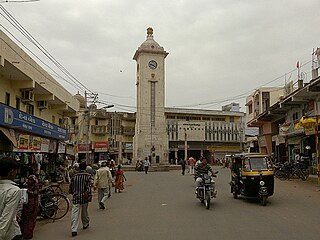
Khambhat, also known as Cambay, is a city and the surrounding urban agglomeration in Anand district in the Indian state of Gujarat. It was once an important trading center, but its harbour gradually silted up, and the maritime trade moved to Surat. Khambat lies on an alluvial plain at the north end of the Gulf of Khambhat, noted for the extreme rise and fall of its tides, which can vary as much as thirty feet in the vicinity of Khambat. Khambat is known for its halvasan sweet, sutarfeni, akik stone and kites (patang), and for sources of oil and gas.
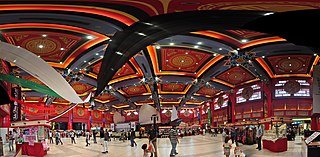
The Ibn Battuta Mall is a large shopping mall on the Sheikh Zayed Road in Dubai, UAE, close to Interchange 6 for Jabal Ali 1 in southwest Dubai. It opened in 2005 and contains more than 300 stores. It is named after Ibn Battuta, a 14th-century Maghrebi traveller, explorer and scholar.

Jalāl Mujarrad Kunyāʾī, popularly known as Shah Jalal, was a celebrated Sufi figure of Bengal. His name is often associated with the Muslim conquest of Sylhet and the Spread of Islam into the region, part of a long history of interactions between the Middle East, Central Asia, and South Asia. Various complexes and religious places have been named after him, including the largest airport in Bangladesh, Hazrat Shahjalal International Airport and numerous mosques around the United Kingdom.
Islam is the state religion of Maldives. The 2008 Constitution or "Fehi Qānoon" declares the significance of Islamic law in the country. The constitution requires that citizenship status be based on adherence to the state religion, which legally makes the country's citizens hundred percent Muslim. However residents, tourists and workers in the Maldives are free to be of any religion and practise them in private. However, in 2020, studies found that 0.29% of the population is Christian. During the late 1990s, the Supreme Council for Islamic Affairs issued warnings, cautioning individuals against listening to radio programs broadcast in the Dhivehi language by the Far East Broadcasting Association, headquartered in the Seychelles. In 1998, 50 Maldivian Christians faced arrest and were detained on the prison island of Dhoonidhoo, while foreign Christians suspected of engaging in missionary activities were expelled from the country.

Ala-ud-din Husain Shah (Bengali: আলাউদ্দিন হোসেন শাহ was an independent late medieval Sultan of Bengal, who founded the Hussain Shahi dynasty. He became the ruler of Bengal after assassinating the Abyssinian Sultan, Shams-ud-Din Muzaffar Shah, whom he had served under as wazir. After his death in 1519, his son Nusrat Shah succeeded him. The reigns of Husain Shah and Nusrat Shah are generally regarded as the "golden age" of the Bengal sultanate.
Al-Sultan Salis Kalaminjaa Siri Meesuvara Mahaa Radun, also known as as-Sulṭān Ṣalāḥ ad-Dīn Ṣāliḥ al-Bangālī was the Sultan of Maldives from 1293 to 1302. He succeeded to the throne after the death of his father Sultan Yoosuf I, by becoming the 15th sultan to ascend the throne of Maldives from the Lunar dynasty. However, according to Moroccan traveller Ibn Battuta, he was not the son of Yoosuf, but rather was a Bengali who had founded a new dynasty.
Al-Sultan Abul Fath Jalaaluddin Omar Veeru Siri Abaarana Mahaa Radun was the Sultan of the Maldives from 1306 to 1341. He was the son of Sultan Salis. According to Moroccan traveller Ibn Battuta, his father was a Bengali and the founder of a new dynasty. Sultan Omar I ruled the country for 35 years until his death in 1341. He had a son named Ahmed Shihaabuddheen and two daughters Khadhijah and Raadhafathi, all of whom later became rulers of the Maldives. He was succeeded by his son Ahmed Shihaabuddheen.
Al-Sultana Khadeejah Sri Raadha Abaarana Mahaa Rehendhi or more famously known as just Rehendhi Khadeejah meaning, Queen Khadeejah, was the Sultana of the Maldives from 1347 to 1379. She was one of the few female rulers in the recorded history of Maldives.
Maldives has been known by many different names during its long history of more than two thousand years. Although several different names are given, the location and the description of the islands confirm the fact that they are part of the Maldives Archipelago.

The Bangladeshi diaspora are people of Bangladeshi birth, descent or origin who live outside of Bangladesh. First-generation migrants may have moved abroad from Bangladesh for various reasons including better living conditions, to escape poverty, to support their financial condition, or to send money back to families there. The Ministry of Expatriates' Welfare and Overseas Employment estimates there are almost 7.5 million Bangladeshis living abroad, the fourth highest among the top 176 countries of origin for international migrants. Annual remittances transferred to Bangladesh were almost $23 billion in 2023, the seventh highest in the world and the third highest in South Asia.
Bangladesh and Maldives established diplomatic relations in 1978. Rear Admiral Akhtar Habib is the Bangladeshi High Commissioner to the Maldives.
The COVID-19 pandemic in Maldives was a part of the worldwide pandemic of coronavirus disease 2019 caused by severe acute respiratory syndrome coronavirus 2. The virus was confirmed to have spread to Maldives on 7 March 2020 from a 69-year-old Italian tourist who had returned to Italy after spending holidays in Kuredu Resort & Spa. The Health Protection Agency of Maldives confirmed two cases in Maldives, both employees of the resort. Following this, the hotel was locked down with several tourists stranded on the island. As of 11 March, the resorts of Kuredu, Vilamendhoo, Batalaa, and Kuramathi island were also placed under temporary quarantine. Schools were closed as a precaution.
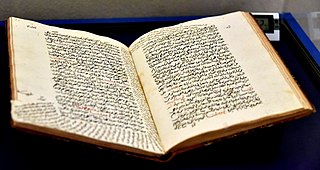
The Rihla, formal title A Masterpiece to Those Who Contemplate the Wonders of Cities and the Marvels of Traveling, is the travelogue written by Ibn Battuta, documenting his lifetime of travel and exploration, which according to his description covered about 73,000 miles. Rihla is the Arabic word for a journey or the travelogue that documents it.

Abū al-Qāsim Jalāl ad-Dīn Tabrīzī was a celebrated Sufi saint of South Asia. He arrived in Bengal shortly after the start of its Muslim rule, where he propagated Islam to the local populace and spent the rest of his life. The Jaliliyyah Order, a small tariqah, is named after him, and he is considered to be the protagonist of the Sanskrit fiction Sekhaśubhodayā.

The Sultanate of Maldive Islands was an Islamic monarchy that controlled the Maldives for 815 years (1153–1968), with one interruption from 1953–1954.
References
- ↑ Ibraheem, Imon (9 February 2021), "Maldives to recruit workers from Bangladesh", Dhaka Tribune, retrieved 28 May 2021,
The president of the Maldives has already declared that all the workers --- including foreigners, will get free vaccination in his country --- "We'll send some nurses to help carry out vaccination in the Maldives particularly for the large Bangladeshi community staying there," he said---Some 80,000 Bangladeshi expatriates are currently working in the Maldives.
- ↑ Ibn Battuta (1953). "The Maldive Islands (Dhibat-ul-Mahal)". In Husain, Syed Mahdi (ed.). The Rehla of Ibn Battuta. Baroda Oriental Institute. p. 204.
- ↑ Kalus, Ludvik; Claude, Guillot (2005). "Inscriptions islamiques en arabe de l'archipel des Maldives" [Islamic inscriptions in Arabic from the Maldives archipelago]. Archipel (in French). 70. Paris, France: 25.
- ↑ Mukherjee, Rila, ed. (2011). "Further commonalities: networks of religion, diplomacy, politics and economics". Pelagic Passageways: The Northern Bay of Bengal Before Colonialism. Primus Books. p. 115. ISBN 9789380607207.